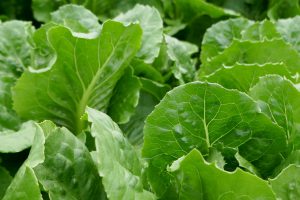As the weather begins to cool down in the fall, this is the signal it’s time to start your winter vegetable garden.
The first thing you want to do is consider where you want to grow your vegetables. Generally, it is best to have the garden plot in full sun throughout most of the day. This allows for the plants to receive the solar energy they need to grow and dries off the morning dew quicker, reducing the chances of certain diseases. Break up the soil if compacted, remove rocks, etc. to allow for a smooth garden bed. It is also important to ensure this location is well-drained and does not accumulate standing water after rain.
Most Florida soils, particularly in North-Central Florida, making growing vegetables difficult, so the next step is to amend the soil. It’s recommended to take a soil sample before adding fertilizer so you will know what nutrients are already in your soil as well as the pH (more on that in a bit). The information in a soil sample report will provide information on what fertilizer is needed and how much. Too much fertilizer can harm plants, waste money, and potentially reach our water supply. Amending the soil with compost is an excellent source of nutrients as well as building up the soil to allow for plant-beneficial soil microbes to thrive.
Let’s return to the topic of pH. Essentially, pH is what determines how acidic or alkaline your soil is. If the pH is too high or too low, key nutrients, such as nitrogen, phosphorous, or potassium will not be as available for plant roots to take up or excessive availability may cause toxicity problems. Soil pH can be raised with the use of agricultural lime, which comes in various forms, or it can be lowed with the use of sulfur. It is essential that the appropriate amount is applied and only if the soil sample results indicate it is needed.
At this point a good location for a garden plot has been selected, a soil sample has been taken, and the soil has been amended. The next step is to choose what kind of vegetables you would like to plant. It is important to choose the vegetables that should be planted this time of year and are UF recommended varieties. Once you know what you want to plant, be sure to plant the seeds or seedlings to the appropriate depth, plant spacing, and row spacing. This will help avoid a lot of problems as the seeds germinate and the plants grow.
Once the seeds or seedlings have been planted, light and frequent irrigation is important to ensure germination and thriving seedlings. Sandy soils drain rapidly and will require more frequent watering than soils containing clay or a lot of organic matter.
For more information on this topic please feel free to contact our office or see the following publication: http://edis.ifas.ufl.edu/vh021
 0
0
